- Home
- Gore Vidal
At Home Page 2
At Home Read online
Page 2
At Bolling Field, I recognized the so-called Hammond flivver plane. Gene had recently told the press that a plane had been developed so safe that anyone could fly it and so practical that anyone who could afford a flivver car could buy it—in mass production, that is. At present, there was only the prototype. But it was my father’s dream to put everyone in the air, just as Henry Ford had put everyone on the road. Since 1933, miles of newsprint and celluloid had been devoted to Gene Vidal’s dream—or was it folly?
We had been up in the Hammond plane before, and I suppose it really was almost “foolproof,” as my father claimed. I forget the plane’s range and speed but the speed was probably less than a hundred miles an hour. (One pleasure of flying then: sliding the window open and sticking out your hand, and feeling the wind smash against it.) As a boy, the actual flying of a plane was a lot simpler for me than building one of those model planes that the other lads were so adept at making and I all thumbs in the presence of balsa wood, paper, and glue—the Dionysiac properties of glue were hardly known then. But those were Depression years, and we Americans a serious people. That is how we beat Hitler, Mussolini, and Tojo.
Next to the Hammond, there was a Pathé newsreel crew, presided over by the familiar figure of Floyd Gibbons, a dark patch covering the vacancy in his florid face where once there had been an eye that he had lost—it was rumored—as a correspondent in the war to make the world safe for democracy, and now for a flivver aircraft in every garage. Since my father appeared regularly in newsreels and The March of Time, a newsreel crew was no novelty. At age seven, when asked what my father did, I said, He’s in the newsreels. But now, since I had been taken so mysteriously out of class, could it be…? I felt a premonitory chill.
As we drove on to the runway (no nonsense in those days when the director came calling), Gene said, “Well, you want to be a movie actor. So here’s your chance.” He was, if nothing else, a superb salesman. Jaded when it came to flying, I was overwhelmed by the movies. Ever since Mickey Rooney played Puck in A Midsummer Night’s Dream, I had wanted to be a star, too. What could Rooney do that I couldn’t? Why was I at St. Albans, starting Latin, when I might be darting about the world, unconfined by either gravity or the director’s Stinson? “I’ll put a girdle round about the earth in forty minutes!” Rooney had croaked. Now I was about to do the same.
As we parked, Gene explained that I was to take off, circle the field once, and land. After I got out of the plane, I would have to do some acting. Floyd Gibbons would ask me what it was like to fly the flivver plane, and I was to say it was just like driving a flivver car. The fact that I had never even tried to drive a car seemed to my father and me irrelevant as we prepared for my screen debut. As it turned out, I didn’t learn to drive until I was twenty-five years old.
My earlier footnotehood was clear-cut. I was indeed the first child to cross the country by air. But now I was a challenger. In 1927, one Jack Chapman, aged eleven, had soloed. Since there had been so much public complaint (suppose he had gone and killed a cow?), my father’s predecessor had made it the law that no one under sixteen years of age could solo. Now here I was a few months younger than Chapman had been in 1927, ready to break the prepubescent record. But the law said that I could not fly unattended. Ordinarily, my father—true pioneer—would have ignored this sort of law. But the director of Air Commerce could not—at least in front of Pathé News of the Week—break a law that he was sworn to uphold.
As I stood by the door to the plane, staring glassy-eyed at the cobra-camera, a long discussion took place. How was I to solo (thus proving that the Hammond flivver was if not foolproof boyproof) and yet not break the 1927 law? Floyd Gibbons proposed that my father sit behind me. But Gene said, no. He was already so familiar a figure in the Trans-Luxes of the Republic that the audience would think that he had done the flying. Finally, Fred Geisse, an official of the bureau (and, like me, a nonpilot), got in first and crouched behind the pilot’s seat. The cameras started to turn. With a slight but lovable Rooneyesque swagger, I climbed aboard.
* * *
Recently, I saw some footage from the newsreel. As I fasten my seat belt, I stare serenely off into space, not unlike Lindbergh-Earhart. I even looked a bit like the god and goddess of flight who, in turn, looked spookily like each other. I start up the engine. I am still serene. But as I watched the ancient footage, I recalled suddenly the terror that I was actually feeling. Terror not of flying but of the camera. This was my big chance to replace Mickey Rooney. But where was my script? My director? My talent? Thinking only of stardom, I took off. With Geisse behind me kindly suggesting that I keep into the wind (that is, opposite to the way that the lady’s stocking on the flagpole was blowing), I circled the field not once but twice and landed with the sort of jolt that one of today’s jet cowboys likes to bring to earth his DC-10.
The real terror began when I got out of the plane and stood, one hand on the door knob, staring into the camera. Gibbons asked me about the flight. I said, Oh, it wasn’t much, and it wasn’t, either. But I was now suffering from terminal stage fright. As my voice box began to shut down, the fingers on the door knob appeared to have a life of their own. I stammered incoherently. Finally, I gave what I thought was a puckish Rooneyesque grin which exploded on to the screen with all the sinister force of Peter Lorre’s M. In that final ghastly frame, suddenly broken off as if edited by someone’s teeth in the cutting room, my career as boy film star ended and my career as boy aviator was launched. I watched the newsreel twice in the Belasco Theater, built on the site of William Seward’s Old Club House. Each time, I shuddered with horror at that demented leer which had cost me stardom. Yet, leer notwithstanding, I was summer famous; and my contemporaries knew loathing. The young Streckfus Persons (a.k.a. Truman Capote) knew of my exploit. “Among other things,” Harper Lee writes of the boy she based on Capote, “he had been up in a mail plane seventeen times, he had been to Nova Scotia, he had seen an elephant, etc.” In the sixties, when I introduced Norman Mailer to my father, I was amazed how much Mailer knew of Gene’s pioneering.
I record this trivia not to try to regain my forever-lost feetnotehood but to try to recall the spirit of the early days of aviation, a spirit itself now footnote to the vast air and aerospace industries of today. In Anthony Sampson’s Empires of the Sky, only a dozen pages are devoted to the first quarter-century of American aviation. There are also three times as many references to something called Freddie Laker as there are to Lindbergh. Well, sic transit was always the name of the game, even now when the focus is on space itself. Finally, I am put in mind of all this by a number of recent books on aviation, of which the most intriguing and original is The Winged Gospel by Joseph J. Corn, in which the author recalls the quasi-religious fervor that Americans experienced when men took to the air and how, for a time, there was “a gospel of flight,” and Gene Vidal was its “high priest.”*2 Flight would make men near-angels, it was believed; and a peaceful world one.
2
Ever since the development of the balloon in eighteenth-century France, so-called “lighter-than-air craft” were a reality. Heavier-than-air craft were considered mad inventors’ dreams until the brothers Orville and Wilbur Wright created the first heavier-than-air plane and flew it at Kitty Hawk, North Carolina, on December 17, 1903. Curiously enough, it took five years before the press could figure out exactly what it was that they had done. At that time the world was full of inventors like the Wright brothers; but the others were either inventing lighter-than-air craft such as the dirigible, or experimenting with gliders. Only a few certified nuts believed in the practicality of heavier-than-air craft. One of these “crackpots” was Henry Adams’s friend at the Smithsonian Institution, Dr. S. P. Langley, and he was on much the same theoretical tack as the Wright brothers. But they left earth first.
It was not until Orville Wright flew a plane at Fort Myer outside Washington in the presence of five thousand people that the world realized
that man had indeed kicked gravity and that the sky was only the beginning of no known limit. Like so many of the early airship makers, the Wright brothers were bicycle mechanics. But then the bicycle itself had been a revolutionary machine, adding an inch or two to the world’s population by making it possible for boys to wheel over to faraway villages where taller (or shorter) girls might be found. At least in the days when eugenics was a science that was the story. Other bicycle manufacturers soon got into the act, notably Glenn H. Curtiss, who was to be a major manufacturer of aircraft.
Although the first generation of flyers believed that airplanes would eventually make war unthinkable, the 1914–18 war did develop a new glamorous sort of warfare, with Gary Cooper gallantly dueling Von Stroheim across the bright heavens. By 1918 the American government had an airmail service. In 1927 the twenty-five-year-old Lindbergh flew the Atlantic and became, overnight, the most famous man on earth, the air age beautifully incarnate. In 1928 Amelia Earhart flew the Atlantic and took her place in the heavens as yin to Lindbergh’s yang.
* * *
It is hard to describe to later generations what it was like to live in a world dominated by two such shining youthful deities. Neither could appear in public without worshipers—no other word—storming them. Yet each was obliged to spend a lot of time not only publicizing and selling aircraft but encouraging air transport. Of the two, Lindbergh was the better paid. But, as a deity, the commercial aspect was nothing to him, he claimed, and the religion all. On the other hand, Earhart’s husband, the publisher and publicist George Palmer Putnam (known as G.P.), worked her very hard indeed. The icons of the air age were big business.
Time magazine, September 28, 1931:
To Charles Townsend Ludington, socialite of Philadelphia, $8,000 might be the price of a small cabin cruiser such as he sails on Biscayne Bay….But the $8,073 61 profit which showed on a balance sheet upon [his] desk last week was as exciting to him as a great fortune. It was the first year’s net earning of the Ludington Line, plane-per-hour passenger service between New York, Philadelphia and Washington.
As practically sole financiers of the company [Nicholas and Charles Townsend] Ludington might well be proud. But they would be the first to insist that all credit go to two young men who sold them the plan and then made it work: brawny, handsome Gene Vidal, West Point halfback of 1916–20, one-time Army flyer; and squint-eyed, leathery Paul (“Dog”) Collins, war pilot, old-time airmail pilot.
Timestyle still exerts its old magic, while Timecheckers are, as always, a bit off—my father graduated from West Point in 1918. An all-American halfback, he also played quarterback. But he was one of the first army flyers and the first instructor in aeronautics at West Point. Bored with peacetime army life and excited by aviation, he quit the army in 1926. Already married to the “beauteous” (Time epithet) Nina Gore, daughter of “blind solon” (ditto) Senator T. P. Gore, he had a year-old son for whom Time had yet to mint any of those Lucite epithets that, in time (where “All things shall come to pass,” Ecclesiastes), they would.
* * *
New airlines were cropping up all over the country. After 1918, anyone who could nail down a contract from the postmaster general to fly the mail was in business. Since this was the good old United States, there was corruption. Unkind gossips thought that an army flyer whose father-in-law was a senator would be well placed to get such a contract. But during the last years of President Hoover, Senator Gore was a Democrat; and during the first term of President Roosevelt, he was an enemy of the New Deal. Gore was no help at all to Gene. But anyone who could fly was automatically in demand at one or another of the small airlines that carried (or did not carry) the mail.
In 1929, C. M. Keys combined a couple of airlines and started Transcontinental Air Transport, or TAT. For a quarter million dollars cash, Keys hired, as a sort of consultant, Charles Lindbergh; he also gave the Lone Eagle shrewd advice on how to avoid income tax. Thus, TAT was dubbed “The Lindbergh Line.” Keys was perhaps the first true hustler or robber baron in American aviation: “He had been an editor of The Wall Street Journal and had worked with Walter Hines Page on the old World’s Work; Keys was also an important aviation promoter. He got into the manufacturing end of the industry during the war and eventually won control of Curtiss Aeroplane & Motor Company…”*3 In other words, a businessman who “got control” of companies; who bought and sold them. TAT also acquired ex-airmail flyer Paul Collins and Gene Vidal.
Like most of the early airlines, TAT was a combined air-rail service. Passenger planes did not fly at night or over the turbulent Alleghenys. On a TAT transcontinental flight, the passengers left New York by rail in the evening; then, in Columbus, Ohio, they boarded a Ford trimotor (eight passengers maximum) and flew to Waynoka, Oklahoma. Here they transferred to the Santa Fe railroad for an overnight haul to Clovis, New Mexico, where another plane flew them into Los Angeles—or Burbank, to be precise. It is a tribute to the faith of the air-gospellers that they truly believed that this grueling two-day journey would, in time, be preferable to the comforts of a Pullman car. Interestingly enough, many descendants of the original railroad barons were immediately attracted to aviation, and names like Harriman and Whitney and Vanderbilt crop up on the boards of directors. These young men were prescient. By the end of the Second War, the railroads that had dominated American life since the Civil War, buying not only politicians but whole states, would be almost entirely superseded by civil aviation and the Teamsters union. But the railroad lords suffered not at all; they simply became airlords.
The transition was hardly overnight. In TAT’s eighteen months of service, the line lost $2,750,000. There were simply not enough customers at sixteen cents a mile; also, more important, there was no mail contract.
* * *
TAT’s headquarters were at St. Louis, and my only memory of the summer of 1929 (other than bleeding eardrums) was of city lights, as seen from a downtown hotel window. For anyone interested in period detail, there were almost no colored lights then. So, on a hot airless night in St. Louis, the city had a weird white arctic glow. Also, little did I suspect as I stared out over the tropical city with its icy blinking signs, that a stone’s throw away, a youth of eighteen, as yet unknown to me and to the world, Thomas Lanier Williams, was typing, typing, typing into the night, while across the dark fields of the Republic…
Paul Collins describes the end of TAT (Tales of an Old Air-Faring Man):*4
About Christmastime 1929 all the St. Louis executives were called to a meeting in New York including Joseph Magee, the general manager; Gene Vidal, his assistant; Luke Harris, Jack Herlihy, and me. We were introduced in Mr. Keyes’s [sic] office to one Jack Maddux, President of Maddux Airlines, an operation that flew from Los Angeles to San Francisco….Mr. Keyes [sic] stated that a merger had been effected between TAT and Maddux.
The ineffable Keys then waited until the assembled management of TAT had returned to St. Louis, where they were all fired.
Simultaneously, the Great Depression began. Small airlines either merged or died. Since a contract to fly the mail was the key to survival, the postmaster general, one Walter F. Brown, was, in effect, the most powerful single figure in aviation. He was also a political spoilsman of considerable energy. In principle, he wanted fewer airlines; and those beholden to him. As of 1930, United Air Lines carried all transcontinental mail. But Brown decided that, in this case, there should be two transcontinental carriers: one would have the central New York-Los Angeles route; the second the southern Atlanta-Dallas-Los Angeles route. As befitted a Herbert Hoover socialist, Brown did not believe in competitive bidding. The southern route would go to Brown-favored American Airlines and the central route to an airline yet to be created but already titled Transcontinental and Western Air, today’s Trans World Airlines.
Brown then forced a merger between TAT (willing) and Western Air Express (unwilling). But as neither flew the mail, Brown’s promise of a
federal contract for the combined operation did the trick. Since Brown was not above corporate troilism, a third airline, a shy mouse of a company called Pittsburgh Aviation Industries Corporation (PAIC), became a member of the wedding. How on earth did such a mouse get involved with two working airlines? Well, there were three Mellons on PAIC’s board of directors, of whom the most active was Richard, nephew of Andrew, former secretary of the treasury. The nobles missed few tricks in the early days of aviation. As it turned out, the first real boss of TWA was a PAIC man, Richard W. Robbins. And so, on August 25, 1930, TWA was awarded the central airmail route even though its competitor, United, had made a lower bid. There was outcry, but nothing more. After all, the chief radio engineer for TWA was the president’s twenty-eight-year-old son, Herbert Hoover, Jr. In those days, Hoover socialism was total; and it was not until his successor, Franklin D. Roosevelt, that old-fashioned capitalism was restored.
* * *
During all this, Gene Vidal had retreated to Senator Gore’s house in Rock Creek Park, Washington, D.C. Certain that he had learned enough about the airline business to start one, he convinced the brothers Ludington that a regular New York-Philadelphia-Washington service was practical. He also came up with the revolutionary notion that the planes would fly “every hour on the hour”: New York to Washington round trip was twenty-three dollars. When the Ludingtons insisted that costs be kept to a minimum, Gene, ever ingenious, said, “We’ll operate at forty cents a mile, taking only a livable salary. Anything under forty cents, we’ll agree to take in stock.” The Ludingtons were charmed.

 The Golden Age: A Novel
The Golden Age: A Novel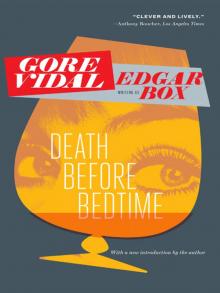 Death Before Bedtime
Death Before Bedtime Burr
Burr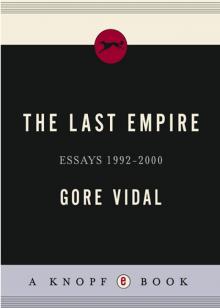 The Last Empire
The Last Empire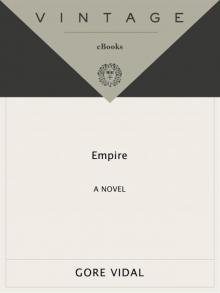 Empire: A Novel
Empire: A Novel The Selected Essays of Gore Vidal
The Selected Essays of Gore Vidal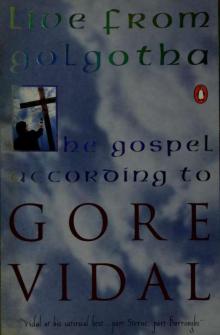 Live From Golgotha
Live From Golgotha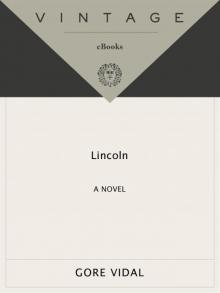 Lincoln
Lincoln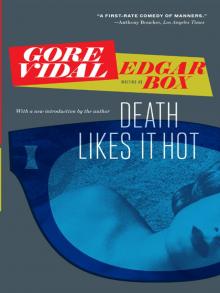 Death Likes It Hot
Death Likes It Hot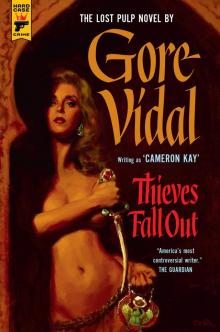 Thieves Fall Out (Hard Case Crime)
Thieves Fall Out (Hard Case Crime)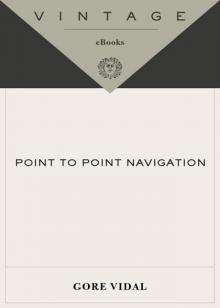 Point to Point Navigation
Point to Point Navigation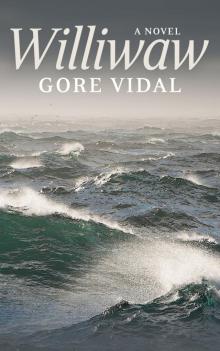 Williwaw
Williwaw Death in the Fifth Position
Death in the Fifth Position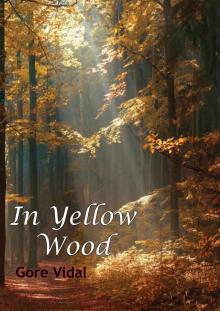 In a Yellow Wood
In a Yellow Wood Julian
Julian Hollywood
Hollywood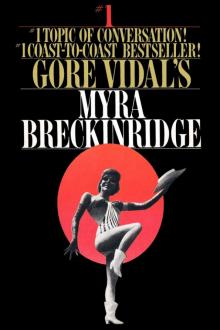 Myra Breckinridge
Myra Breckinridge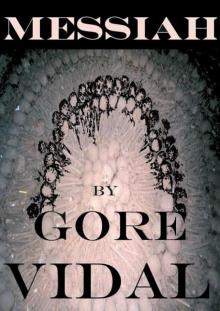 Messiah
Messiah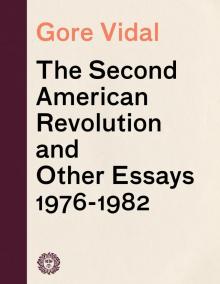 The Second American Revolution and Other Essays 1976--1982
The Second American Revolution and Other Essays 1976--1982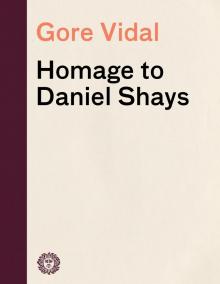 Homage to Daniel Shays
Homage to Daniel Shays Empire
Empire Thieves Fall Out
Thieves Fall Out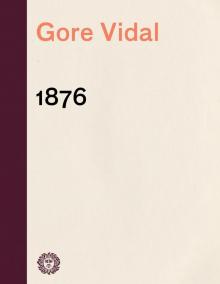 1876
1876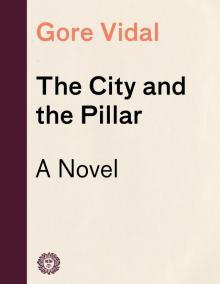 The City and the Pillar
The City and the Pillar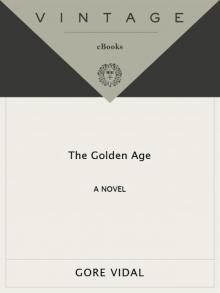 The Golden Age
The Golden Age At Home
At Home